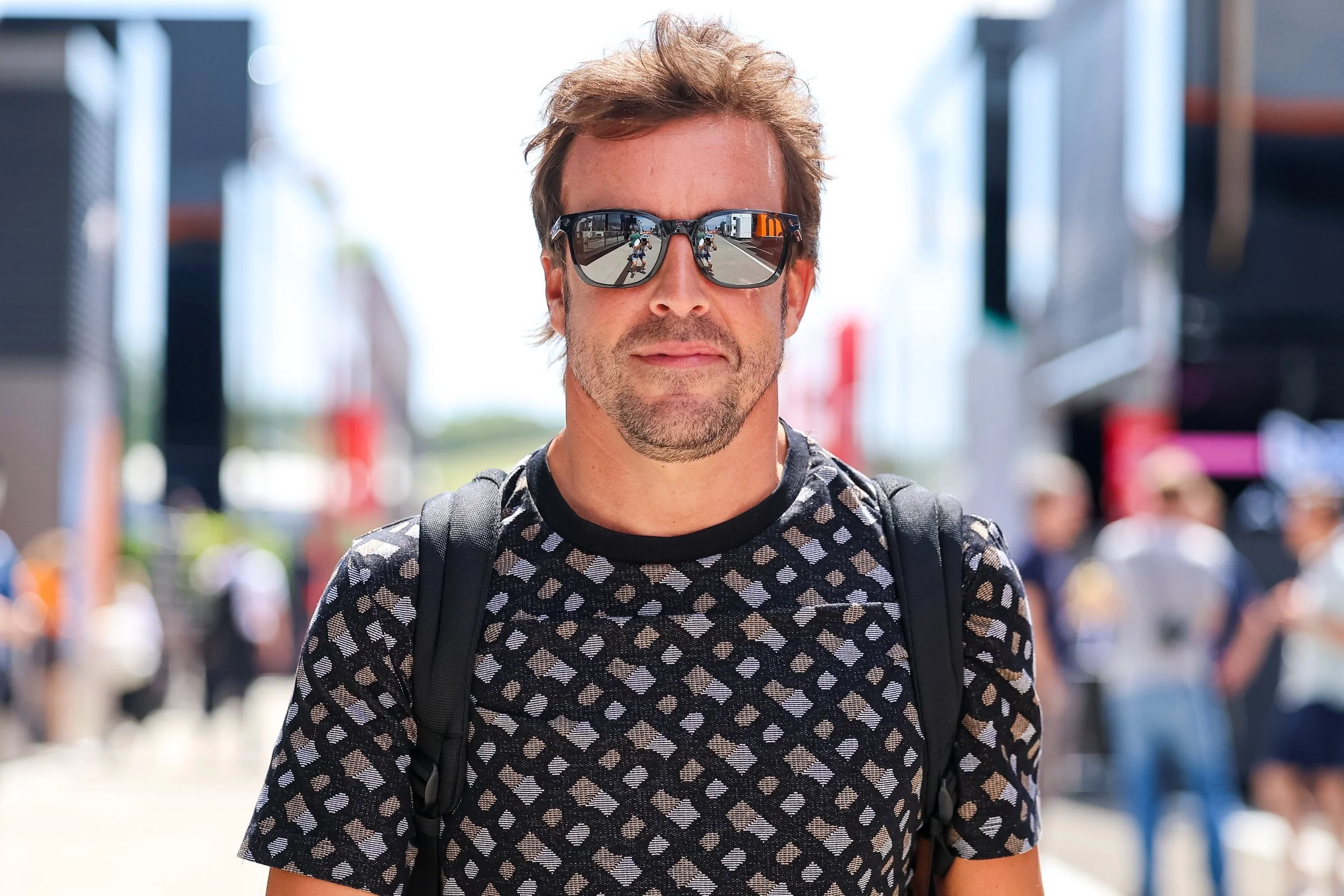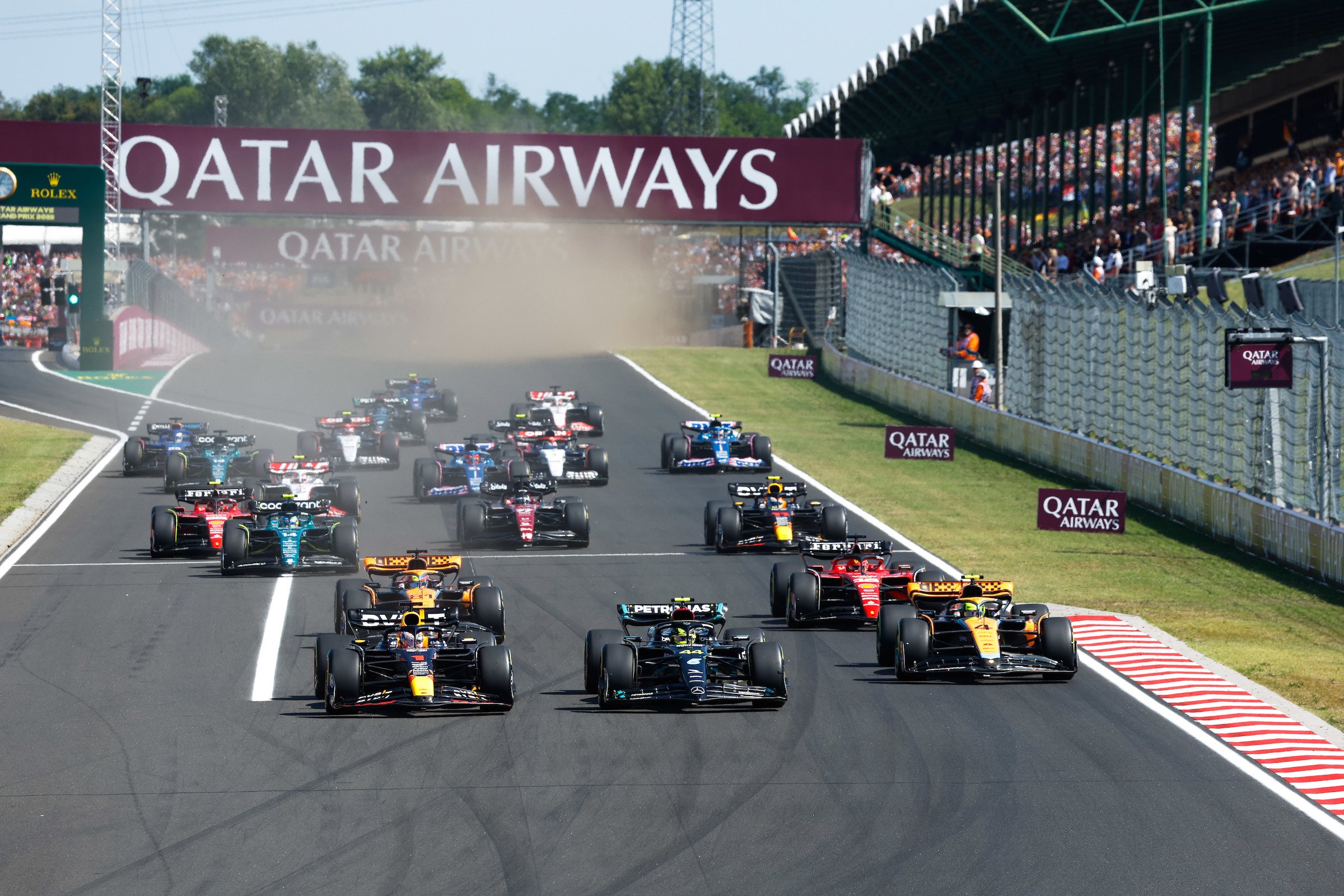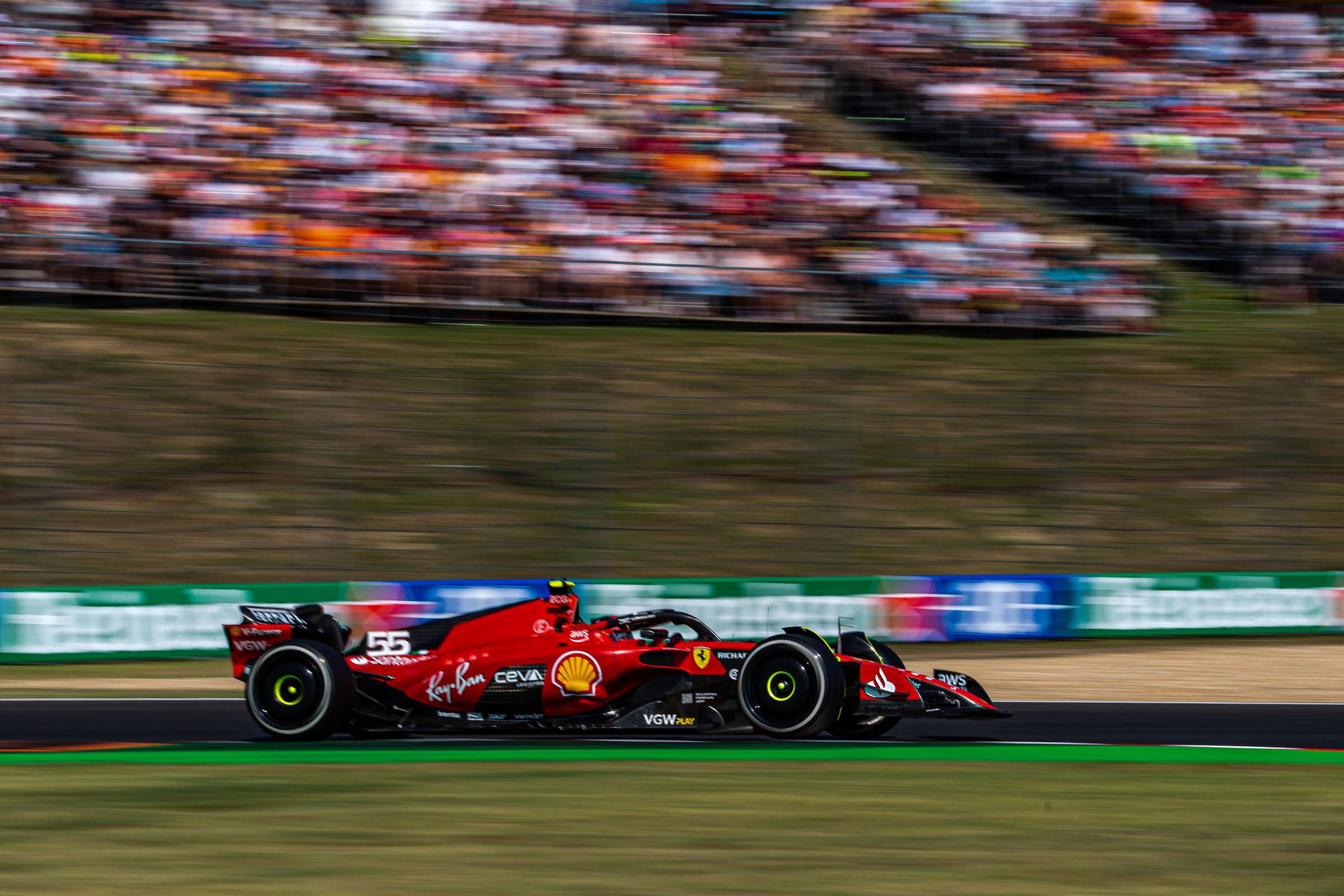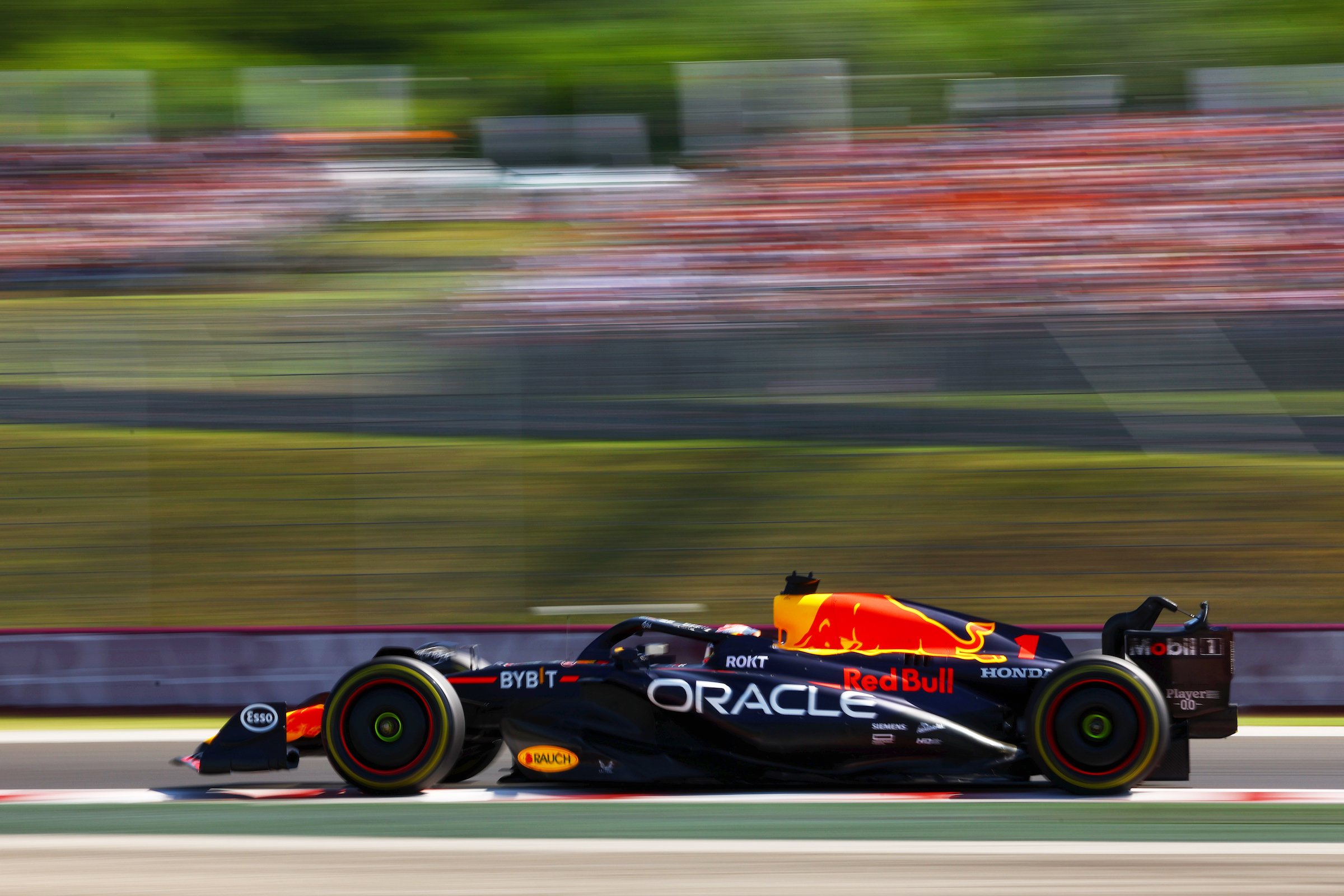In Pictures: Hungary 2023

Two weeks after that amazing and highly surprising weekend in Great Britain, the Formula 1 world moved to Hungary for the 2023 Hungarian Grand Prix.
THE AREA
The Hungaroring is a 4.381 km (2.722 mi) racetrack, located in Mogyoród, Pest County, Hungary, and it is where the Formula One Hungarian Grand Prix is held.
Mogyoród is a small traditional village in Pest County, Hungary. The Battle of Mogyoród took place here on 14 March 1074, between Solomon, King of Hungary, and his cousins Géza and Ladislaus, who were claiming rights to the throne. To commemorate the victory, László Benchmarks were installed, establishing a monastery on Klastrom mountain. Among the sights of the village is the Roman Catholic church, built between 1745 and 1749, the statue of St John of Nepomuk, carved from stone, and the Baroque parish built by the Bishop of Vác. The Hungaroring racetrack is in the town.
The town is 18 km from the center of Budapest, next to the M3 freeway in the valley of the Gödöllői hills.
Budapest is the capital and most populous city of Hungary. It is the ninth-largest city in the European Union by population within city limits and the second-largest city on the Danube River.
The history of Budapest began when an early Celtic settlement transformed into the Roman town of Aquincum, the capital of Lower Pannonia.
It was one of the centers of Renaissance humanist culture by the 15th century.
The Battle of Mohács, in 1526, was followed by nearly 150 years of Ottoman rule. After the reconquest of Buda in 1686, the region entered a new age of prosperity, with Pest-Buda becoming a global city after the unification of Buda, Óbuda, and Pest on 17 November 1873, with the name 'Budapest' given to the new capital. Budapest also became the co-capital of the Austro-Hungarian Empire, a great power that dissolved in 1918, following World War I. The city was the focal point of the Hungarian Revolution of 1848 and the Battle of Budapest in 1945, as well as the Hungarian Revolution of 1956.
Budapest is a global city with strengths in commerce, finance, media, art, fashion, research, technology, education, and entertainment. Hungary's financial center, Budapest is also the headquarters of the European Institute of Innovation and Technology, the European Police College, and the first foreign office of the China Investment Promotion Agency. Over 40 colleges and universities are in Budapest, including Eötvös Loránd University, Corvinus University, Semmelweis University, the University of Veterinary Medicine Budapest, and the Budapest University of Technology and Economics. Opened in 1896, the city's subway system, the Budapest Metro, serves 1.27 million, while the Budapest Tram Network serves 1.08 million passengers daily.
The central area of Budapest along the Danube River is classified as a UNESCO World Heritage Site and has several notable monuments of classical architecture, including the Hungarian Parliament and the Buda Castle. The city also has around 80 geothermal springs, the largest thermal water cave system, the second-largest synagogue, and third largest Parliament building worldwide. Budapest attracts around 12 million international tourists per year, making it a highly popular destination in Europe.
THE CIRCUIT
Bernie Ecclestone wanted a race in the USSR, but a Hungarian friend recommended Budapest. They wanted a street circuit like the Circuit de Monaco to be built in the Népliget, Budapest's largest park, but the government decided to build a new circuit just outside the city, near a major highway. Construction works started on October 1, 1985.
The Hungaroring was built in eight months, less time than any other Formula One circuit. The first race was held on 24 March 1986, in memory of János Drapál, the first Hungarian who won motorcycle Grand Prix races, becoming the first Formula One Grand Prix behind the Iron Curtain.
The Grand Prix is held in the middle of summer, which is usually extremely hot and dry in this region. Its first wet Grand Prix race was in 2006. The circuit is normally dusty due to underuse throughout the rest of the year and its sandy soil. Meaning track evolution is mighty throughout the weekend.
The twisty and bumpy nature of the circuit makes overtaking very difficult in dry conditions, the circuit is nicknamed "Monaco without the barriers" for this reason. Nonetheless, the Hungaroring has been the scene of several memorable races such as the duels of Nelson Piquet and Ayrton Senna, Nigel Mansell's win from 12th on the grid after a dramatic pass on Ayrton Senna in 1989, Damon Hill's almost victory with Arrows in 1997, and Michael Schumacher's change in strategy to beat the McLarens of Häkkinen and Coulthard in 1998.
The first change in the track's layout was carried out in 1989 when the chicane after the actual turn three (a temporary measure put in during construction due to the discovery of a spring where the direct route was due to run) was removed by culverting the stream. In 2003, the main straight was lengthened by roughly 200 m (660 ft) to 908 m (2,979 ft), and the hairpin at the end of the straight was also tightened in an attempt to facilitate more overtaking opportunities, as well as a tightening of what was turn 12. These changes lengthened the circuit length from 3.975 to 4.381 km (2.470 to 2.722 mi).
The 2006 Hungarian Grand Prix was the first wet grand prix at the Hungaroring. This saw the retirement of many drivers including championship rivals Fernando Alonso and Michael Schumacher and gave Jenson Button and the reborn Honda F1 team their first win. Fernando Alonso also earned his first Grand Prix victory at this in 2003, declaring it his favorite track as a result.
INTERESTING FACTS:
Only two drivers have achieved a Grand Slam in Hungary (Pole, win, fastest lap, and having led every lap), Damon Hill in 1995, and Michael Schumacher in 2004.
The F1 race has changed its name from the original "Magyar Nagydíj" (Grand Prix of Hungary in Hungarian) to "Hungarian Grand Prix" in English for the first time since its inception.
FRIDAY
In a bid to enhance sustainability during the Hungarian Grand Prix, teams have adopted a new qualifying format. By reducing the weekend's tire allocation from 13 to 11, they now implement three mandatory tires specifically for qualifying. The tire selection for each session follows a structured pattern: hard tires are utilized in Q1, mediums in Q2, and softs in Q3. However, in wet conditions, teams have the flexibility to opt for any type of tire that suits their strategy. If this change proves successful across all 23 races, it is estimated to save a total of 3,680 tires, contributing to a more environmentally responsible approach.
The focal point of discussion within the paddock revolved around the return of the beloved driver, Daniel Ricciardo. He has taken the place of Nyck de Vries at AlphaTauri for the foreseeable future. While many were saddened by Nyck's departure, most people were delighted to witness Daniel's comeback to the racing scene.
FP1
The opening hour of practice in Hungary was marked by the looming threat of rain, leading to a long queue of eager drivers at the pit lane. Within minutes, all twenty drivers hit the track. Unfortunately, Sergio Perez's Red Bull suffered damage after colliding with the wall at Turn 5, causing the first Red Flag of the weekend. The pressure on Perez seems to be taking its toll, as he struggles to find clean sessions.
Rain further stirred things up, prompting drivers to seek slick tire information. However, the rain arrived sooner than expected, forcing everyone back to the pits after some tense moments. A few brave drivers, including Lewis Hamilton, Esteban Ocon, Alex Albon, and Carlos Sainz, attempted reconnaissance laps on intermediate tires but quickly returned to the pits due to worsening conditions.
After a brief wait, some drivers ventured out again to explore the wet track. Carlos Sainz experienced a scary moment but managed to continue after assistance from the Marshalls, resulting in the second Red Flag. Once the track was cleared, a few drivers returned on intermediate tires for some flying laps.
At the end of the first hour of practice, George Russell emerged at the top of the time chart, followed by Oscar Piastri, Lance Stroll, Lando Norris, and Fernando Alonso in the Top-Five. Surprisingly, Max Verstappen and Lewis Hamilton found themselves at the bottom of the list.
FP2
The time had come for the second practice session, and it was indeed a crucial one. FP2 coincided with both Qualifying and the Grand Prix, making it essential for teams and drivers to explore various strategies for quick laps and long runs.
A few seconds from the start of the session, every driver lined up, eager to experience the thrill of Formula 1 cars on the short and twisty track.
Alex Albon took the lead as the first driver to set a time, clocking in at 1:19.490. However, after twenty minutes, Logan Sargeant surpassed him with an impressive 1:18.836, with the entire field staying within a second of his time, except for Kevin Magnussen's Haas, which trailed 1.567 seconds behind.
Forty minutes into the session, Ferrari's Charles Leclerc dominated the track, achieving the fastest time of 1:17.686. He led the pack ahead of Norris, Gasly, Tsunoda, and Ocon. Impressively, fifteen of the twenty drivers were within one second of Leclerc's time.
As the session progressed, the drivers focused on long runs, and there were no significant changes in the top five positions as the session concluded
SATURDAY
Saturday greeted the teams with improved weather, featuring sunny skies, a pleasant breeze, and higher temperatures. However, the lingering possibility of rain remained.
The rain from the previous night had an impact on the track surface, washing away a significant amount of rubber. Despite some support races earlier in the day, the track retained a relatively green and slippery state, reducing overall grip. Negotiating this tricky condition challenged the drivers, who had to exercise caution to avoid tire lockups and flat spots. Complicating matters, they had access to only 11 sets of tires instead of the usual 13, necessitating careful resource management. Navigating the track successfully now relied heavily on precision and skill, making the day's sessions even more crucial for the teams and drivers.
FP3
The session began with a slower-than-anticipated start, as only nine cars ventured onto the track when it opened. However, within the first 15 minutes, all participants had completed a timed lap.
As the final practice came to a close, Lewis Hamilton emerged as the fastest, setting an impressive lap time of 1:17.811. Following closely behind were Max Verstappen, Sergio Perez, Nico Hulkenberg, and Lando Norris, rounding out the top five performers of the session.
QUALIFYING
Track evolution was key.
Q1
HARD TIRES ONLY.
Surprise, surprise, Zhou Guanyu was the fastest driver in Q1! Outpacing Verstappen, Perez, Sainz and Leclerc. On the other end of the table, Albon, Tsunoda, Russell, Magnussen, and Sargeant, found themselves eliminated from qualifying.
Q2
MEDIUM TIRES ONLY.
As previously mentioned, the track evolution was stunning around the Hungaroring. The surprises continued as several notable drivers, including Carlos Sainz. Ocon, Ricciardo, Stroll, and Gasly, were also knocked out of qualifying. In contrast, Norris, Hamilton, Verstappen, Bottas, and Piastri secured the top positions, with both McLarens and an Alfa Romeo making it into the top five.
The competition was incredibly fierce, with the top ten drivers separated by a mere 0.373 seconds. Such a narrow gap between the fastest qualifiers highlights just how tight and thrilling the qualifying session turned out to be
Q3
SOFT TIRES ONLY.
In one of the most thrilling qualifying sessions of the season, Lewis Hamilton secured pole position by an incredibly slim margin of 0.003 seconds, edging out Max Verstappen. Behind them, Lando Norris and his teammate Oscar Piastri impressed for McLaren, with Zhou Guanyu surprisingly taking the 5th spot for Alfa Romeo. Charles Leclerc of Ferrari followed, and Valtteri Bottas secured another Alfa Romeo in a respectable position. Fernando Alonso represented Aston Martin, while Sergio Perez and Nico Hulkenberg completed the top 10 for Red Bull and Haas, respectively. The competition was incredibly tight, with just 0.577 seconds separating the top 10 drivers.
Lewis Hamilton's pole position in Hungary set a new record, as no one in Formula 1 history had previously started any Grand Prix on pole more times than him. Notably, it had been 34 races since he last secured pole position, dating all the way back to Jeddah in 2021. With this result, his total number of pole positions reached an impressive 104.
““It’s been a crazy year and a half; I’ve lost my voice from shouting in the car! The team has worked so hard, we’ve been pushing so hard to get this pole. I didn’t expect to be fighting for pole, that last run I gave it everything.””
SUNDAY
The Hungaroring enjoyed a splendid day for an exciting Grand Prix. The altered tire allocation (11 sets instead of 13) and qualifying format shook up the grid, resulting in one of the closest-ever qualifying sessions with just 0.577 seconds between the top ten qualifiers. However, some drivers were unhappy with the changes as it compromised practice sessions, forcing them to preserve tires for the race.
““Horrible. For me it’s horrible. I don’t think it has added much today in the time trial. People want to see a qualifying where we all try to go as fast as possible. Q1, Q2 and Q3 we tried to make progress during the sessions, but the bad thing about this format is that we had no tires to practice on. All the free practices have been a continuous tire saving in order to get to the time trial with fresh sets of tires. I think that if you pay an entry fee of 300, 400, 500 euros, these barbarities and we can’t go out because we are reserving tires. I don’t think that’s what Formula 1 wants. But well, you have to try it and if I had an opinion, I wouldn’t vote for this format.””
The cars took to the grid, the National Anthem was played, and it was barely a cloud in the sky as the air temperature trickled towards 30°C, and track temperature was already 50°C! About 10° hotter than at any other part of the weekend.
Two drivers started on the hards, Perez from ninth, Russell from down the back. Four drivers started on the softs, Sainz, Stroll, Gasly, and Tsunoda. The rest on mediums.
The race started at 3 o'clock local time.
It was a tough first lap for pole-sitter Hamilton, who went from first to fourth, with Verstappen taking the lead into the first corner, behind him the McLarens of Piastri and Norris, with the Ferrari pair of Leclerc and Sainz in fifth and sixth respectively.
Alpine had a disastrous start, both drivers with terminal damage after the Ocon-Gasly collision. Ocon was hit in the rear by Ricciardo, who was pushed into the back of the French driver by Zhou. The Alfa Romeo driver was given a five-second penalty for causing a collision.
Lap 9: Albon pitted for hards, Stroll, Bottas, Tsunoda followed suit. Sainz denied Ferrari's call and continued on softs for a few more laps.
By Lap 15, Verstappen led by over 5 seconds, followed by Piastri with Norris a few seconds behind. Hamilton held fourth, Leclerc and Sainz were now under pressure from Perez.
Hamilton was the first of the leading runners to pit on Lap 17, rejoining in eighth. Norris reacted by pitting a lap later, following Hamilton onto the hards, with Leclerc also coming in but losing a lot of time due to a sticky tire, and dropping several places. He fought hard to climb positions again, crossing the line in sixth position but dropped Russell, who battled his way from 18th, after the checkered flag when a five-second penalty for speeding in the pit lane was applied, with Ferrari teammate Carlos Sainz coming home eighth.
Piastri fell victim to an undercut and exited the pits alongside Norris, who passed him at Turn 1. He then was overtaken by Perez and Hamilton.
Max Verstappen dominated the Hungarian Grand Prix, securing his seventh consecutive win and forty-fourth overall. More than 30 seconds behind came Lando Norris to finish second. Sergio Perez completed the podium trio with an impressive climb from ninth on the grid.
An interesting moment came on the rostrum when Lando Norris, in his usual manner, opened the Ferrari champagne bottle by hitting it on the floor. He chose the top step on the podium and when the bottle hit it, Verstappen's delicate porcelain first-place trophy was knocked over, breaking it into pieces.
QUOTES FROM THE PODIUM:
““Over one lap, it was a bit of a struggle but today we had a car that was good on any tyre, we could look after the tyre wear and that’s what made the difference. For the team, 12 wins in a row is just incredible, the last two years have been unbelievable. Hopefully we can keep this momentum going for a long time… Days like this are just perfect.””
““Tough race, not an easy one, especially with Checo catching up at the end. Another podium for us and McLaren, which is amazing. At the minute the [Red Bulls] are too quick, but we are happy with the progress we have made - a few races ago, struggling to get out of Q1 to fighting for poles and podiums.””
““We got close to P2, unfortunately, we had to go through a lot of back-markers. The track was dirty off line so I had some pick up, but in the end, a great strategy from the team and a great result. I look forward to being on the podium every weekend. Let’s keep it up.””
NEXT RACE: SPA-FRANCORCHAMPS!

















































































































































